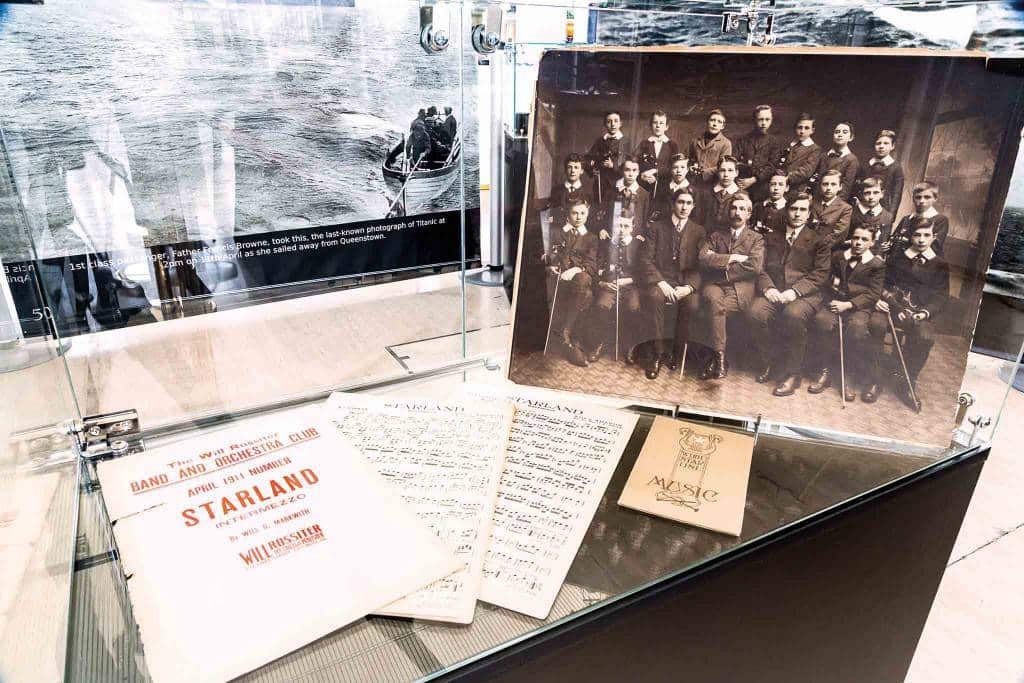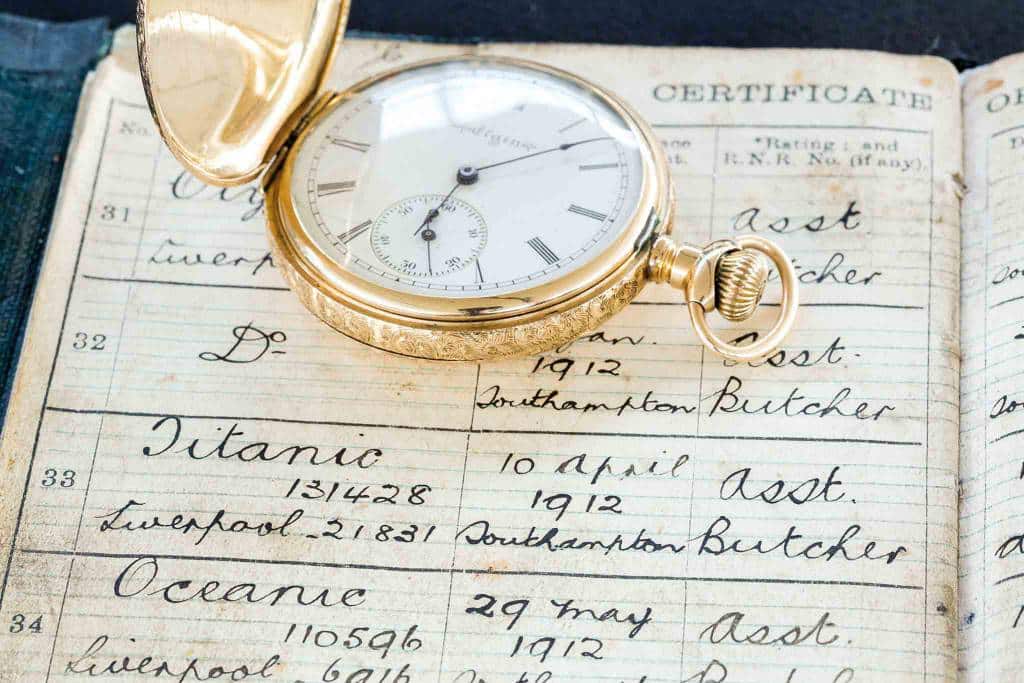Built in Belfast by the Harland and Wolff shipyard in 1909, Titanic was one of three ‘Olympic Class’ ships commissioned by the White Star Line group. The brief was to create the biggest and most luxurious ocean liner in history and, after an epic construction that took over three years, Titanic was ready to take to the seas.
This marvellous creation was considered a feat of engineering thanks to its double bottom and 15 watertight bulkheads with electric doors that, Shipbuilder magazine said at the time, made Titanic ‘practically unsinkable’.
She was also dubbed the world’s most glamorous ‘floating hotel’ thanks to the glittering ballroom, five-star dining, elegant reception rooms and swimming pool which were all at the disposal of the first-class passengers.
The iconic Titanic embarked upon her maiden voyage from Southampton to New York on April 10, 1912. The passengers on board ranged from multimillionaires and movie stars to teachers and tradesmen who all wanted to travel to America – the hallowed land of opportunity and dreams being realised. The guest areas and accommodation were divided into three categories: First, second and third class.
Five days into her epic journey across the Atlantic – and after having made stops at Cherbourg in France and Queenstown in Ireland – Titanic’s captain, Edward Smith, had to plot a new course after hearing reports of icebergs posing problems further ahead.
Yet despite being tipped off, everything seemed as normal to Captain Smith and his crew on that fateful evening of April 14. The sea was calm, there was no wind, the temperature hovered around freezing and the sky was clear. Sadly all these factors proved to be the vessel’s downfall as ice is notoriously difficult to spot in such placid and cold conditions.
Just 20 minutes before midnight on April 14, Titanic’s chief lookout Frederick Fleet cried “Look out – iceberg!” But sadly the alarm call came too late and 40 seconds after receiving it the world’s finest ship had struck a 100-metre glacier and the hull was being ripped wide open.
Within the hour most of Titanic’s watertight compartments at the front of the vessel had flooded and suddenly the unimaginable was happening: Titanic was sinking.
It took just three hours for the luxurious liner to be immersed into the Atlantic with over 1,500 lives being lost and just over 700 passengers surviving.
Yet despite this enormous tragedy happening over 100 years ago it still continues to capture the public’s attention and has spawned numerous books, films, documentaries and exhibitions over the years.
They include ‘Titanic in Photographs’ an international collection of pictures and artefacts from the historic ship which is having only its second outing in the UK when it comes to Tunbridge Wells this summer.
Based on the bestselling book of the same name by world renowned maritime historians Daniel Klistoner and Steve Hall, Titanic in Photographs will be displayed in three different parts of the Royal Victoria Place (RVP) from this coming Saturday (July 23) until Sunday August 21 before it tours around South America and the US later this year.

Marc Burchett, Marketing Manager of RVP told the Times, “I am extremely proud that we will be bringing this unique exhibition to Tunbridge Wells and Kent this summer. It will certainly provide visitors with something different to enjoy and has great appeal to all ages. I think the story of Titanic has captivated us all and this exhibition will certainly not disappoint.”
The gallery-style display will take visitors on a journey back in time, through the eyes of those who were there, including Harland and Wolff’s professional photographer, Robert Welch, and the numerous press photographers and passengers who were on board both Titanic and her rescue ship, Carpathia.
Almost 100 large-scale period photographs, all of which are numbered and set out to guide the visitor through the infamous story of the Titanic, from her conception to her tragic demise, will be on view.
There will also be a central image totalling eight metres by the acclaimed artist and Titanic expert Ken Marshall, illustrating the incredible detail of the ship’s luxurious interiors and stunning exterior.
But the photographs are just one element of this must-see exhibition. In addition there are numerous display cabinets, containing over 130 genuine artefacts from the Titanic and her identical twin sister ship, the Olympic.
These rare and often unique items, which include gilt and crystal light fittings, china, silverware, crystal and elegant furniture, all help bring the photographs to life, transporting the visitor back in time and placing them in the picture.
Also on display is stationery from Titanic’s Reading and Writing Room, some of which was sent home as a souvenir by one of the victims after they posted it at what was to be the last stop in Queenstown.
A railway ticket that was purchased on board the Titanic from the Purser’s Office by a third-class passenger for an onward journey that would never take place can also be viewed.
Although the emphasis of the exhibition is based around the beauty, opulence and splendour of this truly magnificent ship, there are many poignant reminders of how it all came to an end including lifeboat plaques, a passenger list, memorial postcards and even a gold pocket watch, which was dropped by a first-class passenger as he rushed to secure a place in one of the last lifeboats and found by one of Titanic’s crew members.
‘Titanic in Photographs’ is brought to you in association with Royal Victoria Place and the Times of Tunbridge Wells. Entry to the exhibition is free and visitors to Royal Victoria Place will be able to tour around it during normal trading hours.
For your chance to win our Titanic competition click here.

FASCINATING TITANIC FACTS
- On July 29, 1908 the design plans for the Titanic and her sister ship Olympic were agreed in principle
- There were 246 injuries and two deaths recorded during the ship’s 26-month construction in Belfast
- Twenty horses were required to carry Titanic’s main anchor
- The ship burned around 600 tonnes of coal a day – hand shovelled into its furnaces by a team of 176 men.
- Almost 100 tonnes of ash were ejected into the sea each day
- The Titanic even had its own on-board newspaper – the Atlantic Daily Bulletin
- There were 20,000 bottles of beer on board, 1,500 bottles of wine and 8,000 cigars – all for the use of first-class passengers
- Titanic’s Grand Staircase descended down seven of the ship’s ten decks and featured oak panelling, bronze cherubs and paintings
- The scheduled time of the first lifeboat drill was cancelled by Captain Smith without explanation. This meant that the crew were unrehearsed when the real lifeboat evacuation commenced
- When it sank it went down almost four kilometres into the Atlantic ocean
- As the ship slowly slipped beneath the waves, bandleader Wallace Hartley and his fellow musicians carried on playing until the final moments
- Only 16 wooden lifeboats and four collapsible boats were carried, enough to accommodate 1,178 people, only one third of Titanic’s total capacity
- John Jacob Astor IV was the richest passenger on board, with a net worth of around $85m (approximately $2bn today). He went down with the ship
- Robert Ballard – a Franco American explorer – discovered the wreckage in 1985, 370 miles off the coast of Newfoundland
- James Cameron’s 1997 film Titanic which starred Leonardo Di Caprio and Kate Winslet has grossed more than $2bn and won 11 Oscars
- The last remaining survivor of the disaster, Millvina Dean, died on May 31, 2009, aged 97. She was two months old at the time of the sinking








